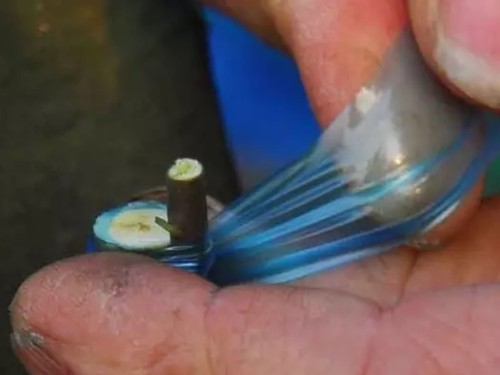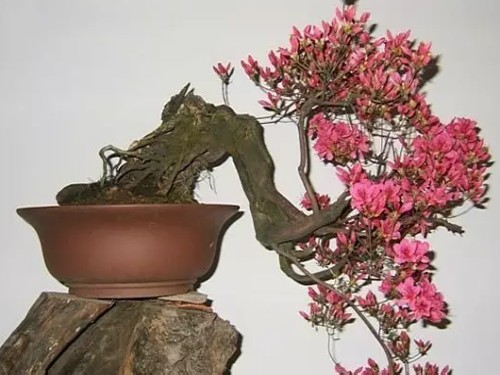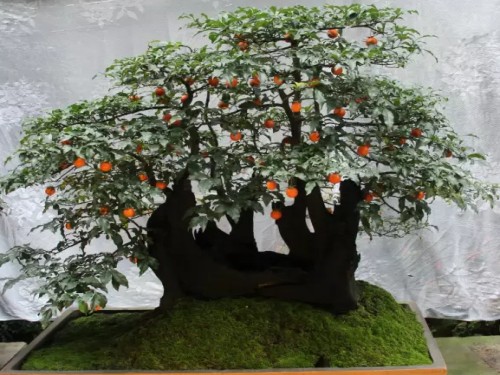Grafting technique of bonsai with golden marbles
For people who love nature and plants, they must put a lot of potted plants at home. The feeling of being surrounded by flowers and plants is very good. I feel that I am in a good mood when I am in the woods. This is also very beneficial to my health.

For most potted plant enthusiasts, they must know that golden marbles, as a kind of landscape, is the best choice. The golden marble posture is quaint, the branch is sparse leaf red, the flower shape is like a bottle, the fruit is round like a ball, orange-red when ripe, the hanging fruit period is long, bright and pleasing to the eye, it is a good product for viewing fruit bonsai. The following is to introduce the grafting technology of bonsai with golden marbles:
1. Because the sap of golden marbles oxidizes and blackens quickly, so the grafting season should be chosen. April is better (it may be different in different places, it is best to see that the buds are sprouting but no leaves are growing), and choose a cloudy day that has just finished raining (there is plenty of sap. Will not let the grafted buds dry too quickly).
2. The sticky wood should at least have a thick little finger (if the joint is big and easy to live, and the teeth will grow fast), the bud branches should be as big as chopsticks, straight, 1 to 2 years old, and the bud distance is about 4 cm.
3. Take a bud and leave 0.5 to 1 cm above and 3 minutes below. Use a knife (sharp) down the sticky wood layer to separate the skin, the distance is the same as the bud, leaving 1 cm of skin.
4. Cut off the skin on the opposite side of the bud, and cut it into a small and 45-degree angle with the broken surface below.
5, insert the bud into the sticky wood, there can be no seams on the bonding surface, wrap the remaining leather at the bottom of the bud, wrap it tightly with a plastic strip (be careful not to hurt the bud), and seal the bud above to prevent moisture from evaporating.
6. After that, put on a transparent bag to prevent Rain Water.
Note:
1. Use the knife to get into place at once. If you want to mend the knife, it must be flat and there must be no slag.
2. The knife should be sharp and sterilized, do not touch the incision with your hands, and your hands should be sweaty.
3. After picking it up, the sun should be covered. Don't die in the sun. You can't see the water. If you see the water, you will die, so you have to cover the bag.
Time: 2019-06-10 Click:
- Prev

How to fertilize bonsai flowers? What if I apply too much fertilizer?
Fertilization is mainly based on the requirements of ecological conditions and biological characteristics of flowers, pay attention to the relative balance of the three elements of fertilizer, as well as the composition of soil, the characteristics of fertilizer and other factors to determine the choice of fertilizer. 1. Fertilizer characteristics: fertilizer is divided into organic fertilizer and inorganic fertilizer.
- Next

Illustration of grafting technique of golden marbles
The reason why the golden billiard is called the golden billiard is that its fruit is golden yellow, oval, and the fruit is everlasting, so it is called the golden billiard. Although golden marbles bear fruit and have the scientific name of black persimmon, its fruit is inedible and its fruit is toxic and harmful to health, so
Related
- Fuxing push coffee new agricultural production and marketing class: lack of small-scale processing plants
- Jujube rice field leisure farm deep ploughing Yilan for five years to create a space for organic food and play
- Nongyu Farm-A trial of organic papaya for brave women with advanced technology
- Four points for attention in the prevention and control of diseases and insect pests of edible fungi
- How to add nutrient solution to Edible Fungi
- Is there any good way to control edible fungus mites?
- Open Inoculation Technology of Edible Fungi
- Is there any clever way to use fertilizer for edible fungus in winter?
- What agents are used to kill the pathogens of edible fungi in the mushroom shed?
- Rapid drying of Edible Fungi

